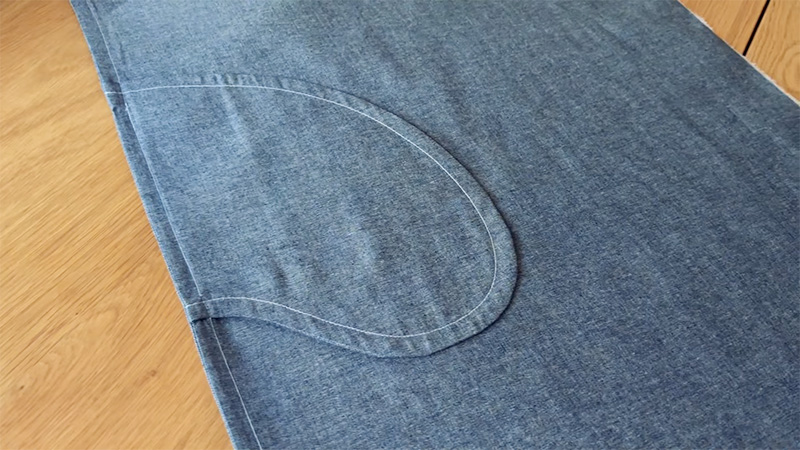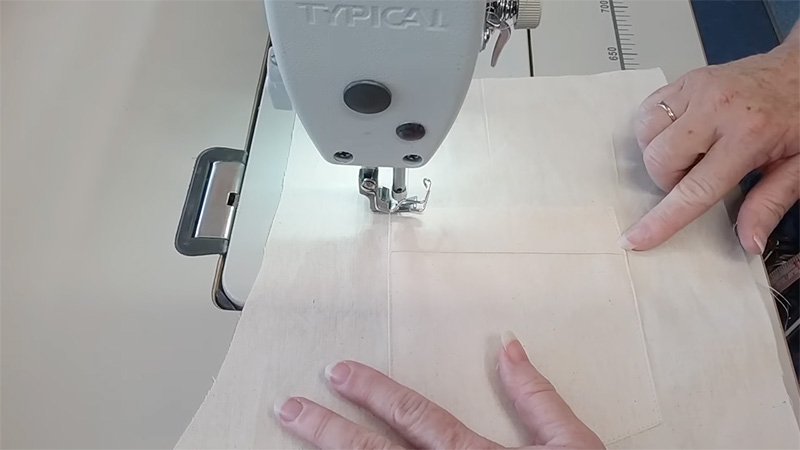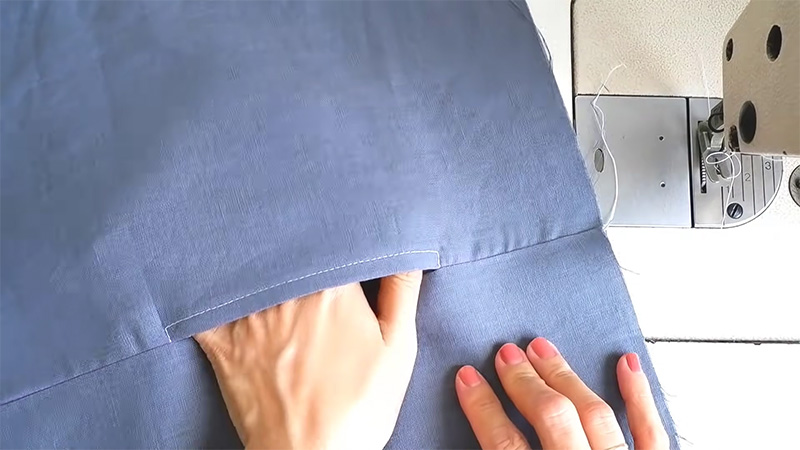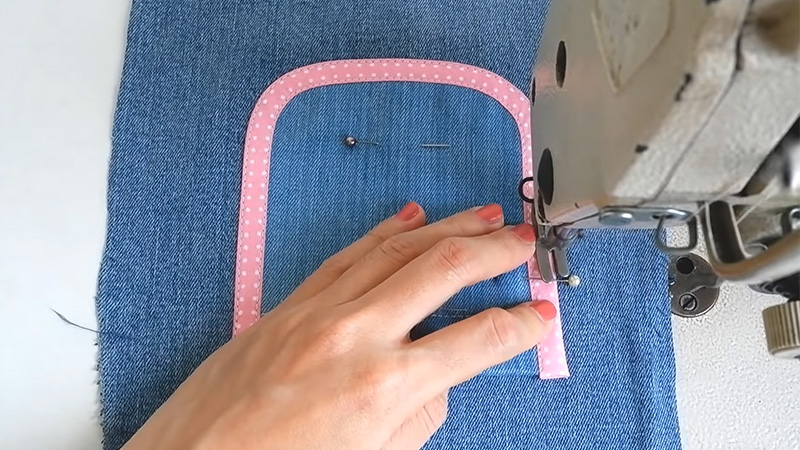Learning how to sew a pocket is a fundamental skill for anyone venturing into the world of sewing. Pockets serve both functional and decorative purposes in garments, bags, and various sewing projects.
The ability to create well-constructed and neatly finished pockets can elevate the quality and appearance of your creations. In this comprehensive guide on “How to Sew a Pocket,” we will explore seven simple methods for adding pockets to your sewing projects.
From patch pockets to zippered pockets, we will break down each technique, providing step-by-step instructions and tips to ensure your pockets are not only functional but also aesthetically pleasing.
Whether you’re a beginner or an experienced sewist looking to refine your skills, mastering pocket sewing techniques is a valuable step in your sewing journey.

How To Sew A Pocket?
Sewing a pocket is a fundamental skill in garment construction and sewing projects.
Here are the simple methods for sewing a pocket:
Patch Pocket
Patch pockets are easy to sew and are attached to the fabric’s surface. To create one, cut out a pocket shape from your fabric, fold and press the edges to create a clean edge, and then sew it onto your garment or project.
In-Seam Pocket
In-seam pockets are often found in skirts and dresses. They are sewn within the side seams of the garment. After cutting the pocket pieces, stitch them into the side seams, leaving the top edge open.
Welt Pocket
Welt pockets are commonly seen on tailored garments like blazers and trousers. They feature a finished opening with a welt strip. This method involves precise cutting, folding, and stitching to create a polished pocket appearance.
Patch with Flap Pocket
These pockets combine a patch pocket with a flap that covers the opening. After sewing the patch pocket, attach a flap piece and secure it with buttons or snaps for a functional and stylish pocket design.
Kangaroo Pocket
Kangaroo pockets are often seen on hoodies and sweatshirts. They consist of a single, large pocket that spans across the front of the garment. Stitch the edges of the pocket to the front of your garment.
Zippered Pocket
Zippered pockets are secure and suitable for jackets, bags, and pants. You’ll need to insert a zipper along the pocket opening, creating a closure for keeping items safe.
Hidden Pocket
Hidden pockets are discreet and are often used for stashing small items. Sewn between layers of fabric, they remain hidden from view. Simply create a pocket shape and stitch it into the seams of your project.
Each of these pocket sewing methods serves different purposes and offers unique stylistic features. Depending on your project and the desired functionality, you can choose the pocket style that best suits your needs and sewing expertise.
What Is The Best Stitch For Pockets?

The choice of stitch for pockets depends on the pocket type, fabric, and desired look.
Here are the stitches commonly used for various pocket styles:
Straight Stitch
The straight stitch is versatile and suitable for most pocket types. It’s simple and offers a clean, classic look. Use it for patch pockets, in-seam pockets, and welt pockets.
Zigzag Stitch
Zigzag stitches are ideal for reinforcing pocket edges, preventing fraying. They are often used for patch pockets and can be adjusted in width and length for added stability.
Topstitching
Topstitching involves sewing parallel rows of straight stitches along the edges or seams of a pocket. It not only reinforces the pocket but also adds a decorative element, commonly seen in denim or jeans pockets.
Edge Stitch
Edge stitching is a close straight stitch sewn along the pocket’s edge, providing a clean finish and reinforcing the fabric. It’s commonly used for welt pockets and hidden pockets.
Triple Stitch
The triple stitch creates a strong, durable seam suitable for high-stress areas like pocket openings. It involves sewing the same line of stitching three times in one pass and adding reinforcement.
French Seam
French seams are perfect for delicate fabrics and concealed pockets. This technique encases the raw edges within a folded seam, creating a neat, secure pocket.
Bar Tack Stitch
Bar tack stitches are short, dense stitches used to reinforce pocket openings and stress points. They are essential for zippered and kangaroo pockets, adding strength and durability.
The best stitch for your pocket depends on the fabric, function, and style of your project. Experiment with different stitches and adjust settings to achieve the desired look and durability.
Always consider the pocket’s purpose and how it complements your overall sewing design.
Pocket Design Ideas

Pockets aren’t just functional; they can also add a stylish and creative element to your sewing projects.
Here are the pocket design ideas:
Contrast Fabric Pockets
Add a pop of color or texture by using a contrasting fabric for your pockets. This design idea works well with denim jeans, skirts, or dresses, creating a visually striking detail.
Decorative Stitching
Elevate the look of your pockets with decorative stitching. Experiment with different stitch patterns, like scallops, waves, or even embroidery, to make your pockets stand out.
Patchwork Pockets
Patchwork pockets are a great way to use up fabric scraps. Piece together various fabric remnants to create a unique and colorful pocket design. This idea is perfect for bags, aprons, or quilted projects.
Printed Fabric Pockets
Use printed or patterned fabric for your pockets to create an eye-catching contrast with the main fabric. This design choice is especially popular in garment sewing, where it can make a simple dress or shirt more interesting.
Zippered Pockets with Flair
Incorporate zippers into your pocket design for both functionality and style. Add a decorative zipper pull, use contrasting zipper tape, or choose a unique zipper placement to make a statement.
Hidden or Secret Pockets
Conceal pockets within seams or linings for a hidden or secret pocket design. This is ideal for discreetly storing small items, like keys or cash, within your garments or bags.
Appliqué Pockets
Appliqué allows you to add decorative shapes, motifs, or even characters to your pockets. Simply cut out the desired design from a contrasting fabric and attach it to the pocket for a playful touch.
These pocket design ideas open up endless possibilities for personalizing your sewing projects. Consider the fabric, purpose, and overall aesthetic of your project when choosing a pocket design to create a cohesive and stylish finished piece.
What Is The Best Fabric For Pockets?

Selecting the right fabric for pockets is essential to ensure durability, functionality, and a cohesive look with your sewing project.
Here are the kinds of fabrics commonly used for pockets:
Cotton Fabric
Cotton is a versatile choice for pockets in a wide range of projects. It’s easy to work with, comes in various weights, and offers good durability. Use lightweight cotton for lining pockets and medium to heavyweight cotton for more substantial pockets.
Denim
Denim is a robust choice for pockets, especially in jeans and denim jackets. It’s durable, adds structure, and can complement the main fabric when used for pocket linings or decorative accents.
Canvas
Canvas is a heavy, durable fabric ideal for pockets in bags, totes, and outerwear. It provides stability and can withstand the wear and tear of daily use.
Lining Fabric
Lightweight lining fabrics like polyester, satin, or silk are perfect for lining pockets in garments. They add a smooth finish, reduce bulk, and make it easy to slide hands or items in and out of pockets.
Ripstop Nylon
Ripstop nylon is a lightweight, water-resistant fabric suitable for pockets in outdoor gear, backpacks, and rain jackets. Its strength and resistance to tearing make it a reliable choice.
Fleece
Fleece adds warmth and comfort to pockets in cold-weather garments. It’s often used as a lining material for jacket pockets or as a cozy interior lining in hoodies and sweatshirts.
Velvet or Suede
For an elegant touch, consider using velvet or suede fabric for pocket linings or accents in dressier garments. These fabrics add a luxurious feel and visual appeal to the inside of your projects.
The best fabric for pockets depends on the project’s purpose and the desired aesthetic. Consider the weight, texture, and durability of the fabric in relation to the main fabric of your project to ensure a harmonious and functional pocket.
FAQs
What are the essential tools for sewing a pocket?
To sew a pocket, you’ll need basic sewing tools like a sewing machine, needles, pins, fabric scissors, and matching thread. Depending on the pocket style, you may also require specialized tools like zippers or interfacing.
Are there specific pocket styles suitable for beginners?
Yes, if you’re new to sewing pockets, start with simple styles like patch pockets or in-seam pockets. These are relatively straightforward and provide a great foundation for learning pocket construction.
How do I ensure my pockets are symmetrical and well-placed on a garment?
Before sewing, mark the pocket placement using fabric chalk or pins. Measure carefully, and double-check the alignment by folding your garment in half to ensure symmetrical pockets.
Can I sew pockets by hand if I don’t have a sewing machine?
Absolutely! While a sewing machine is faster, you can sew pockets by hand using basic hand-sewing stitches like running stitch or backstitch. It may take more time, but the results can be just as satisfying.
What’s the secret to neat, professional-looking pocket finishes?
Pay attention to details. Press your fabric before sewing to ensure crisp edges, use proper seam allowances, and finish the pocket edges with techniques like zigzag stitching or serging to prevent fraying. Practice and precision will lead to polished pocket finishes.
Conclusion
Sewing pockets is a skill that opens up a world of creative possibilities in the realm of sewing. As we conclude our exploration of “How to Sew a Pocket,” we hope you’ve gained the confidence and knowledge needed to incorporate pockets seamlessly into your sewing projects.
Pockets are not just practical; they can be stylish accents that enhance the overall look and functionality of your creations. Whether you’re sewing garments, bags, or home decor items, the ability to choose the right pocket style and execute it flawlessly is an invaluable asset.
As you continue your sewing journey, remember that practice is key to perfection. Experiment with different pocket designs, fabrics, and techniques to make each pocket you sew a true reflection of your craftsmanship.
Meta:
Leave a Reply